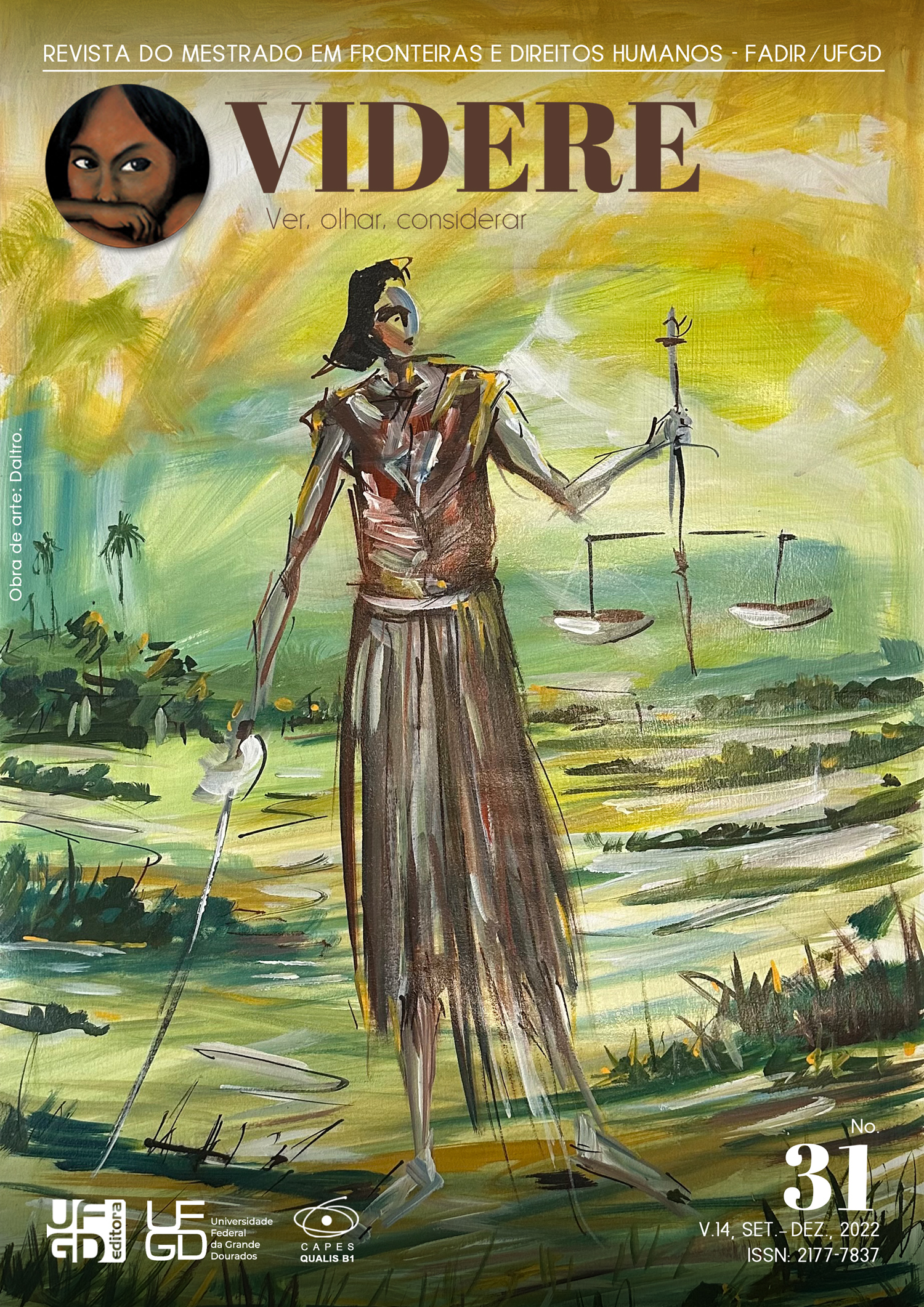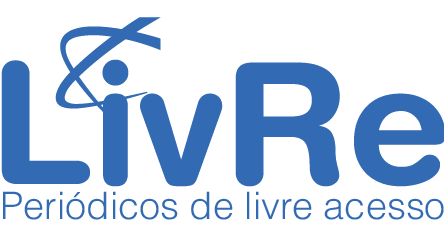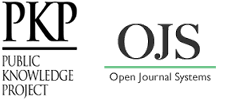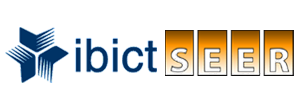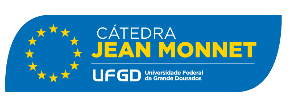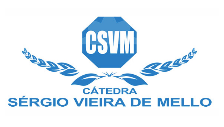Direito ao consumo sustentável e ODS12: a importância do safe by design na gestão dos riscos nanotecnológicos
DOI:
https://doi.org/10.30612/videre.v14i31.16418Keywords:
Sustentabilidade, Consumo sustentável, Nanotecnologia, Safe by designAbstract
The article aims to demonstrate the safe by design tool as an alternative to build safer and more sustainable products, given the risks presented by nanotechnology. Thus, in the first part of the article, the interrelationship between Law, sustainability and sustainable consumption is demonstrated. In the second part, the risks of nanotechnology to the health of consumers and the environment are analyzed, as well as safe by design as a form of risk management, with a view to minimizing them. Bibliographic and documental research is used and the method of approach will be used the systemic-constructivist matrix, due to the possibility of building responses in an intertwined and communicative way between the systems of society. It was concluded that safe by design is a prime example of how sustainable production and consumption brings benefits to consumer health protection and a healthy and balanced environment and connects with SDG 12.
Downloads
References
AGÊNCIA BRASILEIRA DE DESENVOLVIMENTO INDUSTRIAL (ABDI). Estudo prospectivo nanotecnologia. Brasília, DF, 2010. (Série Cadernos da Indústria ABDI, v. 20). Disponível em: http://www.abdi. com.br/Estudo/Estudo%20Prospectivo%20de%20Nanotecnologia.pdf. Acesso em: 15 set. 2022.
AYALA, Patryck de Araújo. Direito ambiental de segunda geração e o princípio de sustentabilidade na política nacional do meio ambiente. Revista de Direito Ambiental, v. 63, p. 103-132, jul./set. 2011.
ATZ, Ana Paula. Responsabilidade pelo Produto Tóxico: o Direito e a Ciência na proteção do consumidor. São Paulo: Thomson Reuters Brasil, 2022.
BECK, Ulrich. Risk Society: towards a new modernity. London: Sage, 1992.
BERTI, Leandro Antunes; PORTO, Luismar Marques. Nanosegurança: guia de boas práticas para fabricação e laboratório. São Paulo: Cencage Learning, 2016.
BOSSELMANN, Klaus. O princípio da sustentabilidade: transformando direito e governança. Tradução de Phillip Gil França. São Paulo: Revista dos Tribunais, 2015.
BRASIL. SECRETARIA NACIONAL DO CONSUMIDOR. Consumo Sustentável. Caderno de Investigações Científicas, Brasília, v. 3, 2013.
BRUNDTLAND, Gro Harlem; COMUM, Nosso Futuro. Relatório Brundtland. Our Common Future: United Nations, 1987.
BUZBY, Jean C. Nanotechnology for food applications: more questions than answers. The Journal of Consumer Affairs, Malden, v. 44, n. 3, 2010. 2010. Disponível em: http://onlinelibrary.wiley.com/doi/10. 1111/j.1745-6606.2010.01182.x/epdf. Acesso em: 15 set. 2022.
CANOTILHO, José Joaquim Gomes. O tom e o dom na teoria jurídico-constitucional dos direitos fundamentais”. In: Estudos sobre Direitos Fundamentais. Estudos sobre Direitos Fundamentais. Coimbra: Editora Coimbra, 2004.
CANOTILHO, José Joaquim Gomes. “Estado Constitucional Ecológico e Democracia Sustentada” In: Eros Roberto Grau e Sérgio Sérvulo da Cunha (coord.). Estudos de Direito Constitucional. São Paulo: Malheiros, 2003. p. 101-110.
CARVALHO, Delton. A sociedade do risco global e o meio ambiente como um direito personalíssimo intergeracional. Revista de Direito Ambiental, v. 52, p. 27-36, out./dez. 2008.
CENTER FOR FOOD SAFETY (CFS). EPA agrees to regulate novel nanotechnology pesticides after legal challenge. Washington, Mar. 24 2015. Disponível em: http://www.centerforfoodsafety.org/press-releases/3817/epa-agrees-to-regulate-novel nano technology-pesticides-after-legal-challenge. Acesso em: 19 set. 2022.
ENGELMANN, Wilson. O Direito face as Nanotecnologias: novos desafios para a teoria jurídica do século XXI. In: WOLKMER, Antonio Carlos; LEITE, José Rubens Morato (Orgs.) Os “Novos” Direitos no Brasil: natureza e perspectivas. 3 ed. São Paulo: Saraiva, 2016.
EUROPEANCOMMISSION. Science for Environment Policy. Assessing the environmental safety of manufactured nanomaterials: in-depth report 14. Bristol, Aug. 2017d. Disponível em: http://ec.europa. eu/environment/integration/research/newsalert/pdf/assessing_environmental_safety_nanomaterials_IR14_en.pdf. Acesso em: 16 set. 2022
FREITAS, Juarez. Sustentabilidade: direito ao futuro. Belo Horizonte: Fórum, 2012.
GALEMBECK, Fernando apud OLIVEIRA, Marcos. Medidas preventivas: estudos apresentam propostas para possíveis impactos de nanoprodutos na saúde humana e no meio ambiente. Revista Pesquisa FAPESP, São Paulo, ed. 251, p. 72, jan. 2017. Disponível em: http://revistapesquisa.fapesp.br/wp-content/uploads/ 2017/01/070-073_Nano_251.pdf. Acesso em: 19set. 2022.
GAS, Samuel et al. Safer formulation concept for flame-generated engineered nanomaterials. ACS Sustainable Chemistry & Engineering, Washington, v. 1, n. 7, Disponível em: http://pubs.acs.org/doi/ abs/10.1021/sc300152f. Acesso em: 20 set. 2022.
GATTI, Antonietta M.; MONTANARI, Stefano. Case studies in nanotoxicology and particle toxicology. Cambridge: Academic Press, 2015.
GOTTSCHALK, Fadri; KOST, Elias; NOWACK, Bernd. Engineered nanomaterials in water and soils: a risk quantification based on probabilistic exposure and effect modeling. Environmental Toxicology and Chemistry, New York, v. 32, n. 6, June 2013. Disponível em: <https://www.ncbi.nlm.nih.gov/pubmed/23418073>. Acesso em: 16 set. 2022.
GUPTA, Nidhi; FISCHER, Arnout R. H.; FREWER, Lynn Jayne. Ethics, risk and benefits associated with different applications of nanotechnology: a comparison of expert and consumer perceptions of drivers of societal acceptance. Nanoethics, Dordrecht, v. 9, n. 2, Apr. 2015. Disponível em: https://www.ncbi.nlm. nih.gov/pubmed/26300995. Acesso em: 16 set. 2022.
GUTERRES, Sílvia S.; POHLMANN, Adriana R. Relatório de acompanhamento setorial nanotecnologia na área da saúde: mercado, segurança e regulação. Brasília, DF: Agência Brasileira de Desenvolvimento Industrial (ABDI), jan. 2013. Disponível em: http://www.abdi.com.br/Estudo/relatorio-nanotecnologia. pdf. Acesso em: 16 set. 2022.
HASSELLÖV, M.; KAEGI, R. Analysis and characterization of manufactured nanoparticles in aquatic environments. In: LEAD, J. R.; SMITH, E. (Ed.). Environmental and human health impacts of nanotechnology. Chichester: John Wiley & Sons, 2009.
HASSELLÖV; KAEGI apud GUTERRES, Sílvia S.; POHLMANN, Adriana R. Relatório de acompanhamento setorial nanotecnologia na área da saúde: mercado, segurança e regulação. Brasília, DF: Agência Brasileira de Desenvolvimento Industrial (ABDI), jan. 2013. p. 42. Disponível em: http://www.abdi. com.br/Estudo/relatorio-nanotecnologia.pdf. Acesso em: 16 set.. 2022.
HOHENDORFF, Raquel von; ENGELMANN, Wilson. Nanotecnologias aplicadas aos agroquímicos no Brasil: a gestão do risco a partir do diálogo entre as fontes do direito. Curitiba: Juruá, 2014.
HUPFFER, Haide Maria; LUZ, Carla da; RODRIGUES, Jéferson Alexandre. Nanoética e sociedade de risco: a emergência do princípio responsabilidade frente ao avanço das nanotecnologias. In: ENGELMANN, Wilson; HUPFFER, Haide Maria (Org.). BioNanoÉtica: perspectivas jurídicas. São Leopoldo: Trajetos Editorial, 2017.
KAHRU, Anne; IVASK, Angela. Mapping the dawn of nanoecotoxicological research. Accounts of Chemical Research, Washington, v. 46, n. 3, Mar. 2013. Disponível em: https://www.ncbi.nlm.nih.gov/pubmed/ 23148404. Acesso em: 19 set. 2022.
KLAINE, Stephen J. et al. Paradigms to assess the environmental impact of manufactured nanomaterials. Environmental Toxicology and Chemistry, New York, v. 31, n. 1, Jan. 2012. Disponível em: http://online library.wiley.com/doi/10.1002/etc.733/abstract. Acesso em: 17 set. 2022.
KJØLHOLT, Jesper et al. Environmental assessment of nanomaterial use in Denmark. Copenhagen: The Danish Environmental Protection Agency, 2015. (Environmental Project, n. 1788). Disponível em: <https://www2.mst.dk/Udgiv/publications/2015/10/978-87-93352-71-1.pdf>. Acesso em: 15set.2022.
MARQUES, Claudia Lima. 25 anos de Código de Defesa do Consumidor e as sugestões traçadas pela Revisão de 2015 das Diretrizes da ONU de proteção dos consumidores para a atualização. Revista de Direito do Consumidor, São Paulo, v. 103, jan-fev. 2016, p. 82.
MARQUES, Claudia Lima. Contratos no Código de Defesa do Consumidor: o novo regime das relações contratuais. 9 ed. rev. e atual. São Paulo: Thomson Reuters Brasil, 2019.
MARQUES, Claudia Lima. A proteção do consumidor como política global e regional: o caso do Mercosul. Revista da Faculdade de Direito da Universidade Federal de Uberlândia, v. 49, n. 2, jul./dez. 2021
MARQUES, Claudia Lima. Comentários às novas regras da Lei 14.181/2021 introduzidas no CDC. In: BENJAMIN, Antonio Herman; MARQUES, Claudia Lima; LIMA, Clarissa Costa de; VIAL, Sophia Martini. Comentários à Lei 14.181/2021: a atualização do CDC em matéria de superendividamento. São Paulo: Revista dos Tribunais, 2022.
MARQUES, Claudia Lima; ATZ, Ana Paula. A Efetivação das metas do Objetivo de Desenvolvimento Sustentável - ODS 12 no Brasil: pela aprovação do PL3514/2015 de um consumo digital e sustentável. Revista de Direito Ambiental, v. 107, p. 195-233, 2022.
MARQUES, Claudia Lima; ATZ, Ana Paula; ROCHA, Leonel Severo. A comunicação de risco da Covid-19 e o consumo sustentável como adaptação humana à mudança climática: homenagem a Eládio Lecey. Revista de Direito Ambiental, v. 105, p. 213-245, 2022.
MARTINEZ, Diego Stefani Teodoro; ALVES, Oswaldo Luiz. Interação de nanomateriais com biossistemas e a nanotoxicologia: na direção de uma regulamentação. Ciência e Cultura, São Paulo, v. 65, n. 3, p. 32, jul. 2013. Disponível em: http://cienciaecultura. bvs.br/pdf/cic/v65n3/a12v65n3.pdf. Acesso em: 15 set. 2022
ORGANIZAÇÃO DAS NAÇÕES UNIDAS. A ONU e o meio ambiente. Disponível em: A ONU e o meio ambiente | As Nações Unidas no Brasil Acesso em: 10 abr. 2022.
ORGANISATION FOR ECONOMIC CO-OPERATION AND DEVELOPMENT (OECD). Consumer and environmental exposure to manufactured nanomaterials. Information used to characterize exposures: analysis of a survey. ENV/JM/MONO (2017) 32. Paris, Nov. 07 2017. (Series on the safety of manufactured nanomaterials, n. 84). Disponível em: http://www.oecd.org/officialdocuments/publicdisplaydocumentpdf/?cote=env/jm/ mono(2017) 32&doclanguage=e. Acesso em: 15set. 2022.
O CCRSERI publica parecer final relativo à nanoprata. LQES - Laboratório de Química do Estado Sólido, Campinas, 2014. Disponível em: http://www.lqes.iqm.unicamp.br/canal_cientifico/lqes_news/lqes_news_cit/ lqes_news_2014/lqes_news_novidades_1844.html. Acesso em: 19 set. 2022.
OWEN, Richard et al. Beyond regulation: risk pricing and responsible innovation. Environmental Science & Technology, Washington, v. 43, n. 18, 2009. Disponível em: http://pubs.acs.org/doi/abs/10.1021/es80 3332u. Acesso em: 16 set. 2022.
ROCHA, Leonel. A produção autopoietica do sentido do Direito. Revista Direitos Culturais, v. 4, n. 7, p. 13-26, 2009.
ROCHA, Leonel Severo; WEYERMULLER, André Rafael. Comunicação Ecológica por Niklas Luhmann. Novos Estudos Jurídicos, v. 19, n. 1, p. 232-262, 2014.
SANTOS, Robson F.; PEREIRA, R. Preservação ambiental e consumo consciente: aproximações jurídicas a partir da proposta do desenvolvimento sustentável. In: FIORILLO, Celso Antonio Pacheco; WIENKE, Felipe Franz; FREITAS, Vladimir Passos de (Org.). Direito ambiental e socioambientalismo II. 1. ed. Florianópolis: Conpedi, 2017. v. 1.
SARLET, Ingo Wolfgang; FENSTERSEIFER, Tiago. Direito Constitucional Ecológico. 7 ed. São Paulo: Thomson Reuters Brasil, 2021.
SARLET, Ingo Wolfgang. Direito fundamental a um clima estável e a PEC 233/2019. Conjur. 14 dez.2020. Disponível em: ConJur - Direito fundamental a um clima estável e a PEC 233/2019. Acesso em 12 jul. 2022.
SARLET, Ingo Wolfgang; FENSTERSEIFER, Tiago. Notas sobre o princípio da sustentabilidade e os deveres fundamentais dos consumidores à luz do marco jurídico socioambiental estabelecido pela constituição federal de 1988. Revista de Direito do Consumidor, v. 101, p. 241-263, set./out. 2015.
SAVOLAINEN, Kai (Coord.). Nanosafety in Europe 2015-2025: towards safe and sustainable nanomaterials and nanotechnology innovations. Helsinki: Edita; Finland: Finnish Institute of Occupational Health, 2013. Disponível em: http://www.nanowerk.com/nanotechnology/reports/reportpdf/report159.pdf. Acesso em: 15 set. 2022.
SOUZA, Mônica Teresa Costa. Direito e Desenvolvimento. Curitiba: Juruá, 2011.
STONE, Vicki et al. NanoSafetyCluster Research Regulatory Roadmap 2017. Research priorities relevant to development or updating of nano-relevant regulations and guidelines. [S.l.]: European NanoSafety Cluster, Mar. 9 2017. Disponível em: https://www.nanosafetycluster.eu/news/217/66/NanoSafety-Cluster-Research-Regulatory-Roadmap-2017.html. Acesso em: 19 set. 2022.
SUAREZ-MERINO, Blanca; WEIERSMÜLLER, Peter; HÖHENER, Karl. The safe-by-design concept and its relevance across sectors. TEMAS AG, Zürich, 2017. slide 5. Disponível em: http://nanotechia.org/sites/default/ files/the_safe_by_design_concept_and_its_relevance_across_sectors.pdf. Acesso em: 15 set. 2022.
UNITED NATIONS ENVIRONMENT PROGRAMME. Global outlook on Sustainable Consumption and Production Policies: taking action together. Paris: UNEP, 2012.
UNITED NATIONS. Department of Economic and Social Affairs: Sustainable delopments. transforming our world: the 2030 agenda for sustainable development. [S. l.], 2015. Disponível em: https://sdgs.un.org/publications/transforming-our-world-2030-agenda-sustainable-development-17981. Acesso em: 16 fev. 2021.
UNITED NATIONS ENVIRONMENT PROGRAMME. Estado de Direito Ambiental: primeiro relatório global. Jan. 2019. Disponível em: Estado de Direito Ambiental: Primeiro Relatório Global | UNEP - UN Environment Programme Acesso em: 24 ago. 2022.
UNITED NATIONS ENVIRONMENT PROGRAMME. Preventing the next pandemic: zoonotic diseases and how to break the chain of transmission. Nairobi, UNEP, 2020. Disponível em: Preventing the next pandemic - Zoonotic diseases and how to break the chain of transmission | UNEP - UN Environment Programme Acesso em: 10 jul. 2022.
UNITED NATIONS. Declaration of the United Nations Conference on the Human Environment, 1972. Disponível em: NL730005.pdf (un.org) Acesso em: 10 set. 2022.
WORLD HEALTH ORGANIZATION (WHO). One Health. 21 set. 2017. Disponível em: One Health (who.int) Acesso em: 05 set. 2022.
WHO. WHO Director-General’s opening remarks at the media briefing on COVID-19. 11 mar. 2020. Disponível em: https://www.who.int/director-general/speeches/detail/who-director-general-s-opening-remarks-at-the-media-briefing-on-covid-19---11-march-2020. Acesso em: 05 set. 2022.
WHO. Report of the WHO-China Joint Mission on Coronavirus Disease 2019 (COVID-19). 16-24 fev. 2020. Disponível em: https://www.who.int/docs/default-source/coronaviruse/who-china-joint-mission-on-covid-19-final-report.pdf. Acesso em: 12 fev. 2021.
WEISS, Robin A; MCMICHAEL, Anthony J. Social and environmental risk factors in the emergence of infectious diseases. Nature Medicine, v. 10, n.12, p. S70-S76 (2004);
WWF. Fundo Mundial pela Natureza. Pegada Ecológica? O que é isso? 8 abr. 2011. Disponível em: https://bit.ly/3L9E0hi. Acesso em: 14 jul. 2022.
Downloads
Published
How to Cite
Issue
Section
License
Copyright (c) 2023 Revista Videre

This work is licensed under a Creative Commons Attribution-NonCommercial-ShareAlike 3.0 Unported License.
Authors must accept the publication rules when submitting the journal, as well as agree to the following terms:
(a) The Editorial Board reserves the right to make changes to the Portuguese language in the originals to maintain the cultured standard of the language, while respecting the style of the authors.
(b) Authors retain the copyright and grant the journal the right to first publication, with the work simultaneously licensed under the Attribution-NonCommercial-ShareAlike 3.0 Brazil (CC BY-NC-SA 3.0 BR) that allows: Share - copy and redistribute the material in any medium or format and Adapt - remix, transform, and create from the material. CC BY-NC-SA 3.0 BR considers the following terms:
- Attribution - You must give the appropriate credit, provide a link to the license and indicate whether changes have been made. You must do so under any reasonable circumstances, but in no way that would suggest that the licensor supports you or your use.
- NonCommercial - You may not use the material for commercial purposes.
- Sharing - If you remix, transform, or create from material, you must distribute your contributions under the same license as the original.
- No additional restrictions - You may not apply legal terms or technological measures that legally restrict others from doing anything that the license permits.
(c) After publication, authors are allowed and encouraged to publish and distribute their work online - in institutional repositories, personal page, social network or other scientific dissemination sites, as long as the publication is not for commercial purposes.
